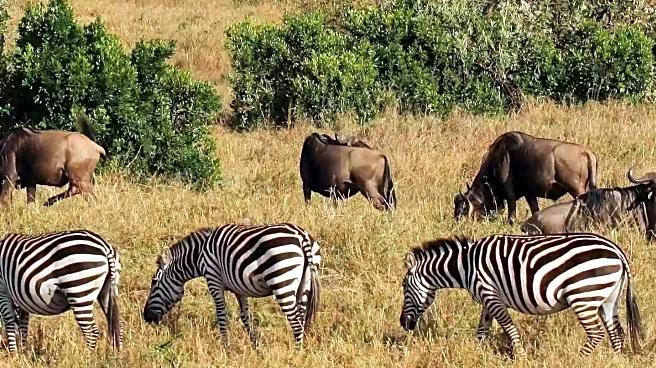What's Happening?
Researchers have discovered the mummified remains of seven cheetahs in caves in Saudi Arabia, marking the first instance of naturally mummified big cats found by scientists. The cheetahs, which died thousands of years ago, were preserved due to the constant temperature and low humidity of the cave environment. The findings include skeletal remains of 54 other cheetahs, suggesting that these caves may have been used by cheetahs for shelter. Genetic analysis of the remains indicates the presence of both Asiatic and northwest African cheetah subspecies in the region historically.
Why It's Important?
This discovery provides valuable insights into the historical distribution and adaptation of cheetah subspecies in arid environments. The presence of mummified cheetahs in Saudi Arabia suggests that these animals were once part of the region's ecosystem, offering clues about past biodiversity and environmental conditions. The findings may inform conservation efforts, as they support the idea that cheetah subspecies could potentially be reintroduced to similar habitats. Understanding the genetic diversity and historical range of cheetahs can aid in developing strategies to protect and preserve these endangered animals.
What's Next?
The research team plans to continue studying the mummified remains to gain further insights into the cheetahs' lives and the environmental conditions that led to their preservation. Future studies may focus on the ecological role of cheetahs in the region and the potential for reintroducing cheetahs to their historical habitats. Conservationists may use this information to advocate for habitat restoration and protection efforts in areas where cheetahs once thrived.
Beyond the Headlines
The discovery raises questions about the impact of human activity on wildlife and the importance of preserving natural habitats. The mummification process highlights the delicate balance of environmental factors that can lead to the preservation of biological remains, offering a unique opportunity to study ancient ecosystems. This finding may encourage further exploration of cave environments as potential sites for uncovering historical biodiversity.











